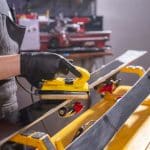The throttle body is an essential component in your car’s engine that controls the amount of air entering the intake manifold. It acts like a gatekeeper, regulating airflow and thus determining the engine’s power output. But what happens when you replace the stock throttle body in your Honda Accord with a larger one? Can it truly enhance the engine’s performance? This article provides a detailed exploration of this topic.
The Role of the Throttle Body in Your Car’s Engine
Before delving into the specifics of the Honda Accord, it’s crucial to understand the role the throttle body plays in your vehicle’s engine. The throttle body is part of the air intake system, which governs the amount of air that can enter the engine.
Additional reading : What’s the Most Efficient Method for Calibrating a High-Performance Throttle Body in a Ford GT?
When you step on the accelerator pedal, it opens the throttle valve, allowing more air to flow into the engine. The car’s computer simultaneously increases the amount of fuel sent to the engine, resulting in a combustible mixture that ignites to generate horsepower.
The throttle body is therefore pivotal to your car’s performance. It effectively controls how much power your car can produce. A larger throttle body theoretically allows more air to flow into the engine, potentially increasing power output. But does this theory hold up in practice, especially for a naturally aspirated engine like the one in a Honda Accord?
Additional reading : What’s the Most Effective Technique for Polishing an Aluminum Intake Manifold on a Classic Car?
The Potential Benefits of a Larger Throttle Body
When it comes to modifying your car’s engine, one common belief is that "bigger is better." After all, a larger intake manifold or a more substantial exhaust system can often lead to noticeable increases in horsepower. But does this same principle apply to the throttle body?
The straightforward answer is "yes," but with certain caveats. A larger throttle body can indeed allow more air to flow into the engine, but this in itself will not necessarily enhance performance. To truly reap the benefits of a larger throttle body, other components of the engine must also be upgraded to handle the increased airflow.
For instance, the intake manifold, camshaft, and cylinder head must be able to accommodate the additional air brought in by a larger throttle body. Furthermore, the fuel system must be capable of delivering an appropriate amount of fuel to maintain the correct air/fuel mixture.
The Effect of a Larger Throttle Body on a Naturally Aspirated Honda Accord
Honda Accords, especially older models, are often equipped with naturally aspirated engines. These engines rely solely on atmospheric pressure for air intake, in contrast to forced induction engines, which use a turbocharger or supercharger to draw in more air.
For a naturally aspirated engine, the effect of a larger throttle body can be noticeable but may not be as pronounced as in a forced induction engine. The reason lies in the fact that the engine’s power is inherently limited by atmospheric pressure. A larger throttle body will permit more air to enter the intake manifold, but the motor’s ability to draw in air is still constrained by the ambient air pressure.
That said, a larger throttle body can still result in a moderate power increase in a naturally aspirated Honda Accord, especially when combined with other performance-enhancing modifications. These might include a cold air intake, a high-flow exhaust system, and performance camshafts, all working in harmony to maximize the benefits of the increased airflow.
Considerations Before Upgrading Your Throttle Body
While increasing the size of your Honda Accord’s throttle body can enhance engine performance, it’s important to remember that this modification should not be undertaken lightly. Before making the decision, you should take into account several factors.
First, as mentioned earlier, other engine components must be modified to accommodate the increased airflow. This could involve a considerable investment in time and money.
Second, while a larger throttle body can improve performance, it can also negatively impact fuel efficiency. The larger amount of air entering the engine will necessitate a correspondingly larger amount of fuel, potentially leading to higher fuel consumption.
Lastly, any modification to the engine can have implications for your car’s warranty. If your Honda Accord is still under warranty, altering the throttle body could potentially void it. Always consult with a professional before making significant engine modifications.
In conclusion, while a larger throttle body can improve airflow in a naturally aspirated Honda Accord, the performance gains may not justify the cost and potential drawbacks for every owner. As with any major modification, careful consideration and professional advice are essential before proceeding.
Adjusting Other Components for a Bigger Throttle Body
As we’ve learned, a larger throttle body can potentially increase horsepower in a naturally aspirated Honda Accord by allowing more air into the intake manifold. However, one thing that needs to be stressed is that an adjustment in the throttle body alone won’t deliver the desired results.
To fully optimize the benefits of a larger throttle body, several other engine components must be modified. This includes the intake manifold, camshaft, and cylinder head. All these parts must accommodate the additional air that a larger throttle body permits.
Particularly, the intake manifold also needs to match the increased size of the throttle body to avoid any restrictions in the flow of air. The camshaft revolving in the cylinder head controls the opening and closing of the valves. Therefore, it also needs to be upgraded to ensure that the increased air intake is utilized efficiently. In addition, the cylinder head may require modifications to maximize the flow of air and fuel into the cylinder and the flow of exhaust gases out of the cylinder.
Moreover, the fuel system should be adjusted to deliver an appropriate amount of fuel to maintain the correct air/fuel mixture, as the increased air will require a corresponding increase in fuel. In some cases, this might require installing a high-performance fuel pump or tweaking the stock ECU.
Conclusion: Is a Larger Throttle Body Worth It?
Considering the mechanics and potential benefits, it’s clear that a larger throttle body can improve the airflow in a naturally aspirated Honda Accord. The effect can be even more pronounced if other performance-enhancing modifications are made.
However, it’s important to consider the potential drawbacks. Upgrading the throttle body and other necessary components can be a significant investment. It could lead to increased fuel consumption, affecting the car’s fuel efficiency. And let’s not forget the potential implications for your car’s warranty.
So, is it worth it to upgrade your Honda Accord’s throttle body? The answer largely depends on your goals and circumstances. If you’re a Honda tech aficionado seeking to maximize your car’s performance and you’re not overly concerned about fuel efficiency or warranty, then it could be a worthwhile project. But if you use your Accord mainly for everyday commuting and fuel efficiency is a priority for you, the benefits might not outweigh the costs.
In the end, like with any significant modifications, it’s essential to seek professional advice. Before making any decisions, speak to a knowledgeable mechanic or a trusted expert in the field. This will ensure that you’re making an informed decision that will bring you the most benefits while minimizing potential drawbacks.
















